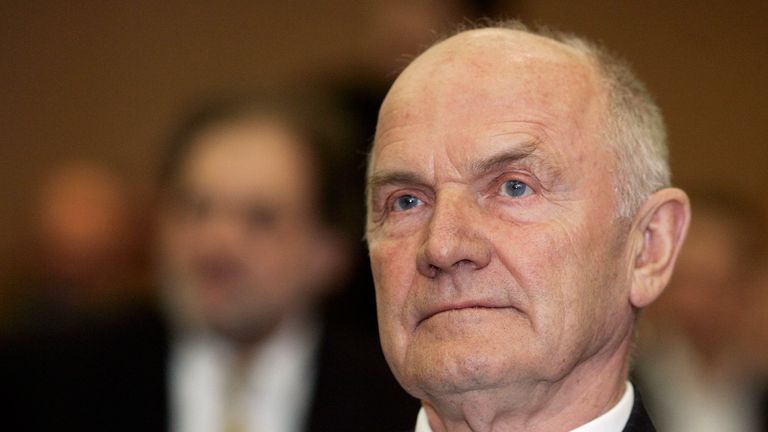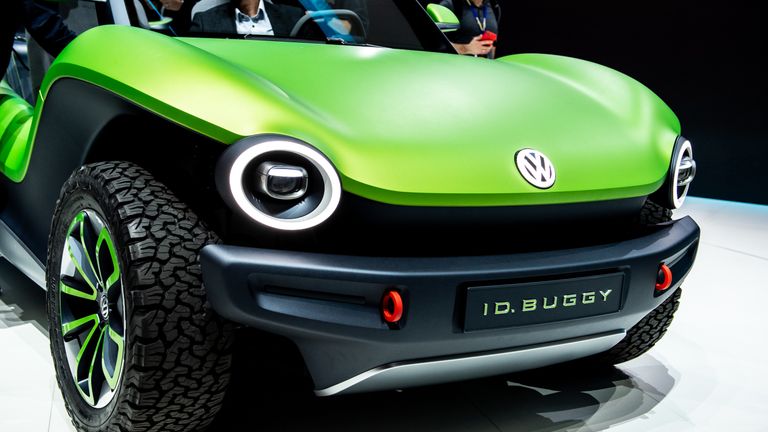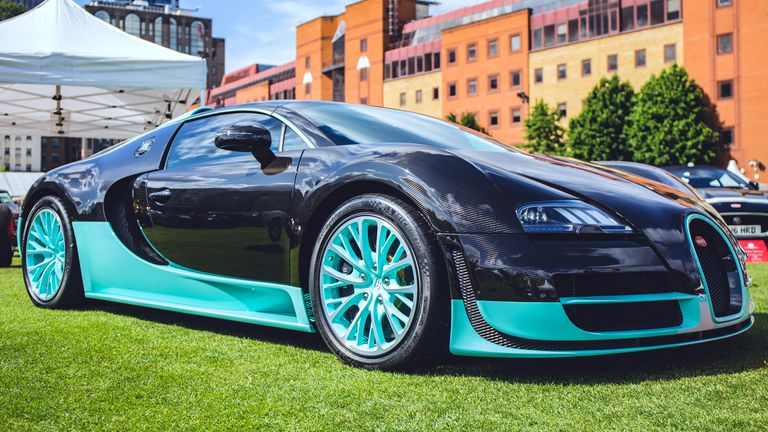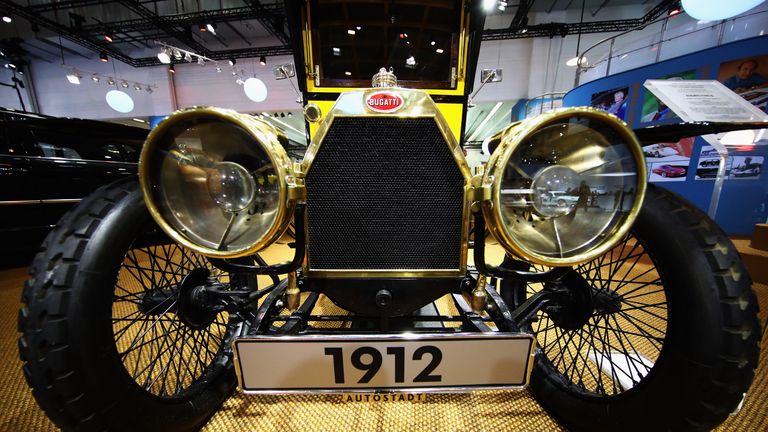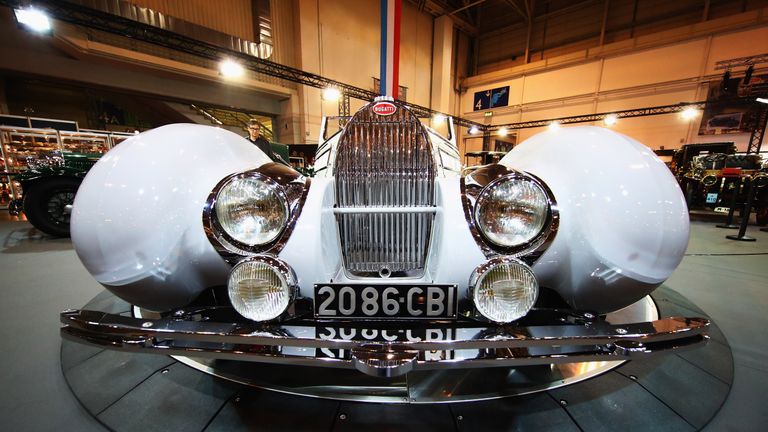It is one of the world’s most famous luxury brands and maker of the world’s fastest production car – and it could soon have a new owner.
Bugatti is set to be sold by its current parent, Volkswagen, to the Croatian entrepreneur Mate Rimac, according to the German magazine Manager.
A sale would mark the end of an inspiring story and mark a partial unravelling of the empire built by Ferdinand Piech, the engineering genius who rescued VW from bankruptcy and, over several decades, made it one of the world’s biggest and most profitable carmakers.
Dr Piech, who died last year, did more than anyone to make Bugatti a success.
It is perhaps no surprise that, barely a year on from Dr Piech’s death, VW is looking to sell the brand he revived and which he described as his “favourite toy”.
The COVID-19 pandemic has dealt VW an immense blow.
Following a 23% drop in sales, the company reported a pre-tax loss of €1.4bn (£1.3bn) for the first six months of this year, compared with a profit of €9.6bn (£8.8bn) in the same period last year.
With net debt of around €162bn (£148bn), it is the world’s most indebted company, at a time when it is needing to invest billions of euros in developing electric and driverless vehicles.
Research and developments costs during the first half of 2020 alone came to €6.7bn (£6.1bn). It needs to spend every penny carefully and a “hobby brand”, as Bugatti has been seen in some parts of VW, is no longer a priority.
Nor is this the first time that a sale of Bugatti has been mooted. There was speculation five years ago, following the “dieselgate” emissions scandal, that VW could dispose of the brand to raise money.
Mr Rimac, who has been nicknamed “the Elon Musk of Croatia”, also knows VW well.
Porsche, which owns 53.3% of VW, took a 10% stake in his electric supercar company, Rimac Automobili, which it has since raised to 15.5%.
At the time of its original investment, in June 2018, Porsche talked openly of transferring Mr Rimac’s technology to both Bentley and Bugatti. Since then, Peter Tutzer – a key player in the development of the Veyron – has joined Mr Rimac as its senior technical adviser.
And Mr Rimac has famously compared his flagship vehicle – in which another former Top Gear presenter, Richard Hammond, was almost killed in 2017 – to the Bugatti.
The emotional wrench to the Piech and Porsche families of offloading Bugatti could be tempered, according to the magazine, by putting Porsche at the heart of any sale. It is being suggested that any sale of Bugatti would not see any cash change hands but see Porsche raise its stake in Mr Rimac.
The magazine’s Europe editor, George Kacher, wrote: “If the future of motoring is electric, not 1500 horsepower petrol-powered hypercars that sell in the hundreds, then getting their hooks further into Rimac, a company with a reputation for stellar electric vehicle technology, sounds very beneficial indeed.”
Bugatti was founded in 1909 by the Italian-born entrepreneur Ettore Bugatti in Molsheim, now part of France but then, part of Germany. The company was a pioneer in grand prix racing – a Bugatti won the first ever Monaco Grand Prix in 1929 – and the marque also won accolades after triumphing at Le Mans. Its cars were driven by monarchs and heads of state and the brand was lauded for turning fast cars into art.
But a series of disasters conspired against the business.
Mr Bugatti’s eldest son, Jean, was killed in 1939 test-driving a racing car while Bugatti’s factory was left in ruins during the Second World War. Mr Bugatti subsequently sought to revive the business but died in 1947. And so, it seemed, did this most romantic of marques. Production ended in the 1950s and the business ended up merging with its rival Hispano-Suiza. The combined business, in turn, was bought in 1968 by Snecma, the French aircraft engineering group famous for its work developing Concorde.
The brand was picked up in 1987 by the Italian businessman Romano Artioli who, in partnership with Mr Bugatti’s youngest son, Michel, opened a new factory at Modena in Italy in 1990 to make a new model, the EB 110, capable to speeds of up to 325km per hour.
The company subsequently acquired Lotus, the famous British sports car marque, but a planned stock market flotation in 1994 floundered. In September 1995, having built just 139 cars over four years, the business went bankrupt. Mr Artioli retained ownership of the Bugatti brand.
Enter Dr Piech, fresh from losing a drawn-out battle with rival BMW for ownership of Rolls-Royce Motors, the most famous luxury car brand of them all. Having already bought Lamborghini, he was keen to own more luxury and supercar brands to take VW upmarket, enabling it to compete more effectively with both BMW and Daimler-Benz.
Mr Artioli was persuaded to sell VW the Bugatti brand in June 1998 and, just a few months later, unveiled a Bugatti concept car at the Paris Motor Show. The EB 118 was greeted with disbelief. Designed by Dr Piech himself, it was the first passenger car to have an 18-cylinder engine. Other versions followed and the fourth concept car became the Bugatti Veyron, launched in 2005, boasting a top speed of 407km per hour (253mph) – faster than a Formula One car.
It won vast accolades including, from among others, the BBC’s Top Gear programme which, in 2009, named it best car of the decade after racing it against an aircraft.
In 2008, presenter James May drove the car at its top speed, stating at the time: “I’m pretty confident that’s as far as I’m ever going to go in a car. Incredible. It’s made my eyes water. It’s a bit disorientating.”
Three years later, he drove it at a new top speed of 417km per hour. Colleague Jeremy Clarkson described it as “cartoonishly fast”.
By then, the Veyron had been officially named the world’s fastest car in the Guinness Book of Records, but while it was an engineering triumph, in financial terms, it was anything but. VW is estimated to have lost $5m (£3.9m) for each Veyron built.
For Dr Piech, that was never the point. His aim was to show that a supercar could be designed and built from scratch. Throughout, he insisted that a Bugatti had to be distinctive but immediately recognisable, frequently reminding people of Mr Bugatti’s original mantra: “If it’s comparable, it’s not a Bugatti.”
The Bugatti Chiron followed. Named in honour of Louis Chiron, the famous French motor racing driver who had worked at the Molsheim site, it was launched in 2017 with a UK price tag of £2.5m.
Despite its past losses, more recently, VW has insisted that Bugatti has made a “positive contribution” to its financial performance.
Such a sale is unlikely to be the end of VW’s pruning of its portfolio. The speculation is that, if it offloads Bugatti, disposals of Bentley and Lamborghini could follow.

